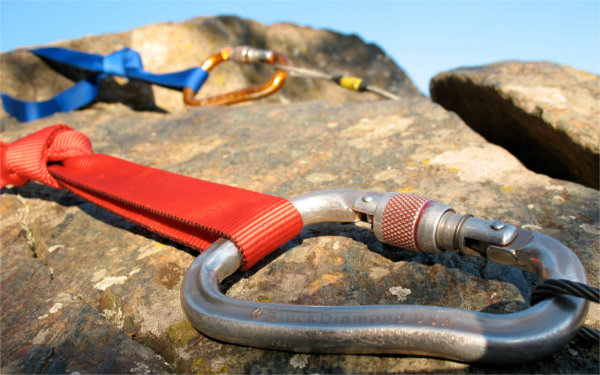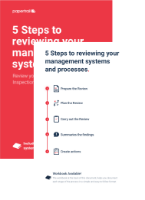Human Error Accidents in Adventure Activities

An Outdoors Perspective by Marcus Bailie of the Adventure Activities Licensing Service
I was recently lucky enough to attend a presentation on Human Error Accidents given by Marcus Bailie, Head of Inspection for the Adventure Activities Licensing Service (AALS) at the Outdoor North Wales Forum. As an extremely experienced inspector with decades of experience in the adventure activities sector, Marcus is in a unique position to be able to identify and explain some of the root causes of accidents and incidents in the outdoors.
The following blog post is a summary of the key points from Marcus’ presentation.
The Challenges of Accident Investigation
Accident investigations are often hampered by the fact our brains aren’t wired in a way that makes it easy to understand exactly what has happened when things go wrong. We tend to jump to comforting conclusions rather than get to the root cause, and vastly under-estimate the impact a prevailing culture or context can have. Marcus referred to a book called Error-Nomics – “Why We All Make Mistakes and What to Do About Them” by Joseph T. Hallinan (now on my Amazon reading list!), and gave an fascinating overview of some of the challenges of accident investigation and different theories involved.
What are the Biggest Cause of Accidents in the Outdoors?
Equipment failure? Instructor inexperience? Bad weather? Bad luck? Marcus explained that although determining the exact cause of accidents is never an easy task, human error is by far the biggest cause of accidents in the outdoors.
Of course, the causes of human error are varied and complex. To help illustrate some of the underlying causes of human error, Marcus talked to us about the Lemon Theory.
The Lemon Theory
This theory works on the basis that when a number of un-related contributory factors line-up (a row of slot machine “lemons”), an accident happens. The example Marcus used to illustrate the Lemon Theory was of an imaginary incident at a climbing wall. Imagine:
- a climber on the wall slipped and fell
- the belayer wasn’t concentrating
- no-one was tailing the rope, and
- the instructor was distracted by attending to another group member
If any one of these factors had happened on there own it is possible an accident will not occur. But in the case that “all the lemons lined up” it is likely an accident could have happened.
Top Causes of Human Error in Adventure Activities
Of course, the job of an inspector or regulator is to really dig deep and uncover these underlying causes when something does go wrong. Marcus has established some common truths which we can all learn from. Here are some of the top causes of human error highlighted in his presentation:
Fatigue
Having staff that are tired and over-worked means you are increasing the chance of accidents and silly mistakes. It makes sense therefore to ensure your staff take regular breaks, and don’t schedule back-to-back shifts.
Multi-Tasking and trying to do too many things at once
Having staff complete multiple tasks at the same time (for example, talking to a group of customers while checking their safety harnesses) can lead to lapses in concentration and dangerous mistakes.
Complacency and boredom
Instructors who are delivering the same activities day-in, day-out are more likely to make mistakes because they either become complacent, or because they try to “spice up” activities to make them more interesting (for themselves, as well as for their clients). Again, this can have dangerous consequences.
Inexperienced instructors
It’s not just technical inexperience which can cause accidents. Inexperience when it comes to client management and people skills is just as dangerous. Inexperienced instructors can fall prey to what Marcus calls “Plan B Syndrome” – preferring to proceed with an activity rather than disappoint customers by resorting to a Plan B.
Inexperienced participants
Similarly, an in-experienced instructor may be less able to make judgement calls about a participant’s ability or suitability for a particular activity, or may be more susceptible to peer pressure. Of course, inexperienced participants is another big cause of human error too.
How to Avoid Human Error in Adventure Activities
Marcus gave some very practical tips on ways to minimise the risk of mistake and accidents caused by human error and increase safety:
1. Monitor and observe your staff
Marcus calls this “Walking the Floor” – essentially, leaving your office and making it your business to understand exactly what your staff are doing (or not doing), on a regular basis. If you haven’t actually seen for yourself what is happening day-to-day, there is no way you can be sure that your staff are competent.
Without being able to demonstrate that you have carried out these sorts of checks (both scheduled and un-announced monitoring sessions), you would have a hard time convincing a regulator should an incident happen at your facility.
Once you have observed your staff, you can then make a note of any points that need to be followed-up on. Is further training required? Do you need to make any changes to operating procedures? Update risk assessments? Whatever you do, you need to make sure you keep accurate records of exactly what is done, by who and when.
2. Nurture your Team
This means more than ticking the boxes in terms of making sure your instructors First Aid certificates are up-to-date. This means actually spending time on training and development. Giving them the chance to feedback and input in your systems. Ensuring they feel valued, supportive and part of a safety-focused team. Training and development does not have to mean expensive external courses. Lots of training can be completed in-house, and the time spent on development conversations can be paid back many times over in terms of improved safety and lower staff turn-over. Set reminders for staff development conversations and performance reviews, and make sure you agree timelines for follow-ups.
3. Build in safe-guards
Given that you know human error is the likely cause of accidents, implement systems that will reduce the risk of human error at every possible point. In other words – don’t put all your eggs in one basket. Use buddy systems to make sure that no one instructor is responsible for pre-flight safety checks. Have participants put on their own safety equipment, and make it the instructor’s job to check. Create check-lists and use them. It’s not enough to ask staff to read and sign risk assessments or standard operating procedures. We know that humans make errors, so design health and safety systems that take that as fact.
Of course, it’s all well and good to know all of this theory, and another to put it into practice. Having systems and procedures in your head is not good enough for the regulators. Of course, as CEO and co-founder of Papertrail, I would suggest you use our health and safety management system for your adventure activities record keeping! But whatever system you use, it’s essential to keep clear and precise records that show how, when and where you are putting your systems into practice.
You can see the whole presentation and others from the event by going to the Outdoor North Wales Forum website. This was a really informative and useful session that gave everyone a lot to think about. I’m really grateful to the North Wales Outdoor Forum for organising the event, and to Marcus Bailie for sharing his knowledge.
About Papertrail
Papertrail is the only health and safety management system designed specifically for the needs of those involved in adventure activities and working at height. Local authorities, climbing walls, outdoor activity centres and many more use Papertrail to save time and reduce risk by safely storing their records all in one place. Book a demo and find out how Papertrail could help your organisation.
Improve your inspection management system today




